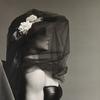Joseph Henry Sharp was one of the six original members of the Taos Society and is considered to be its “Spiritual Father”. The original members of the group, known collectively as the “Taos Six” included Sharp,
Eanger Irving Couse,
Oscar Berninghaus, Bert Geer Phillips, W. Herbert Dunton, and Ernest Blumenschein. Later members included
E. Martin Hennings and
Walter Ufer. The group was inspired by the tradition, history, and beauty of the area and the Native American people who had lived there for nearly a thousand years. The artists created landscape paintings of the southwest deserts and mountains, and painted intimate portraits of the local inhabitants who had a long artistic tradition that included native crafts. Members of the Taos Society of artists often used rich, vibrant colors in their works, a break from the more monochromatic and traditional palettes seen in that era.
Sharp was born in Ohio in 1859 and became deaf as a child as a result of a near-drowning accident. At age 14 he moved to Cincinnati Ohio to live with his aunt and studied art at Mickmicken University, and later traveled to Europe to study at the Antwerp Academy.
He was one of the first American painters to visit the Taos area in 1893, and he quickly fell in love with the local people, their culture, and the landscape. He set up his artist’s studio there in 1909. He moved permanently to Taos in 1912 where he became internationally known for his portraits, landscapes, and genre scenes that prominently feature and celebrate Native Americans. J.H. Sharp was awarded the Gold Medal at the Panama-California Exposition in 1915, and was a member of the Salamagundi Club, the Society of Western Artists and the Artists' Guild of Chicago.
J.H Sharp is remembered for his portraits of Native Americans in the Southwest that feature close attention to detail and visually illustrate the spirit, character, and essence of the subject. He is also known for his Western landscape paintings. He passed away in 1953, in Pasadena, where he had established a studio in 1910.
President Theodore Roosevelt commissioned Sharp to paint 200 portraits of Native Americans, 11 of which are now in the Smithsonian Institute. Phoebe Hearst, William Randolph Hearst's mother, purchased 155 of Sharp's paintings which she eventually donated to U.C. Berkeley. The largest collection of the artist's works is held by the Gilcrease Museum in Tulsa Oklahoma, and his paintings can also be found at the Amon Carter Museum, Houston Museum of Fine Art, the Cincinnati Art Museum, and in many other significant private collections worldwide.
E.I. Couse
Eanger Irving Couse was born in Saginaw, Michigan, where he first started drawing the Chippewa Indians who lived nearby. Couse worked hard to pay for his art education, occasionally dropping out to earn money while attending the Art Institute of Chicago, and the National Academy of Design. In 1897 Couse left for Paris to study at the Academie Julian, where he met the American artist, Joseph Henry Sharp, who often spoke of Taos. Couse would become a frequent visitor and resident of Taos from 1902 on. In 1912 when the historically important Taos Society of Artists was formed, Couse was elected its first President. E. Irving Couse is best known for his intimate images of Native Americans in moments of spiritual ceremony and quiet repose.
Oscar Berninghaus
Born in St. Louis, Missouri in 1874,
Oscar Berninghaus was an important Southwest painter who was another founder of the Taos Society of artists in 1915. He and his group were instrumental in transforming the small Colony in Taos into an internationally known art center. Berninghaus’ works are widely admired for their ability to capture the spirit and character of Native Americans in traditional clothing as they genuinely appeared in their day to day, 20th century lives. He is also remembered for his outstanding Western Landscape paintings, especially desert scenes that often include horses, as well as portraits and figurative works portraying cowboys.
His early works were colorful and strongly influenced by Impressionism. He studied at the St. Louis School of Fine Art and, in 1898, was an illustrator for "McClure's" magazine. He was asked by the magazine to travel to New Mexico and Arizona and he became enchanted by the natural beauty of the area. He met fellow artist, Bert Geer Phillips and began to spend each Summer in Taos.
He had a long successful career and was commissioned by the Anheuser-Busch Brewing Association to do a series of Western scenes. He also created landscape paintings of the area for the Denver and Rio Grande Railroad, and painted a mural in Phoenix, Arizona in 1931 for the Post Office building. Berninghaus died at the age of 77 on April 27, 1952, as a result of a recent heart attack and is considered to be one of the most important and influential early Southwest American artists.
Bert Geer Phillips
Bert Geer Phillips was born in Hudson, New York, in 1868. In 1883 he began five years study at the Art Students League and the National Academy of Design in New York, where he found work as an artist following his training. Opting for more schooling, Phillips left in 1894 for London and Paris, where he met Joseph Henry Sharp and Ernest Blumenschein. Sharp never missed an opportunity to share tales of Taos, New Mexico, and in 1898, Phillips and Blumenschein bought a wagon and headed west. When their wagon broke near Taos, the men ended their trek and rented studios in the town. Blumenschein and Phillips were founding members of Taos Art Colony. Phillips was a collector of Native American artifacts. Pieces from his collection would often appear in his vivid, semi-romantic paintings of the Southwest.
E. Martin Hennings
E. Martin Hennings was born in Pennsgrove, New Jersey, in 1886, and raised in Chicago. He studied at the Pennsylvania Academy of Fine Art and the Art Institute of Chicago before enrolling in the Munich Academy in 1914, where he first began to abandon his classical realist training. With the onset of WW I, Hennings returned to Chicago, where he was an instructor at the Art Institute. In 1917 he was sponsored to travel to the southwest. It was on this trip that Hennings first discovered Taos, New Mexico where he’d move permanently in 1924, banding together with friends from Munich, Walter Ufer and Victor Higgins. All three artists eventually joined the Taos Society of Artists. The remainder of Hennings’ life was devoted to rich painterly works that venerated his Native American subjects.
Walter Ufer
Walter Ufer was born in Germany in 1876, and came to the U.S. the next year, settling in Kentucky. Having shown talent at an early age, he was apprenticed to a lithography firm, before leaving for Europe to study at the Royal Academy in Munich, where he met Joseph Henry Sharp and Ernest Blumenschein. Upon his return to the states, Ufer worked as an illustrator in Chicago before moving permanently to Taos in 1917, where he joined Taos Society of Artists.
Throughout the remainder of his career, Ufer concentrated on simple, non-dramatized paintings of the Native American. Though hampered at times by chronic alcoholism, his work won him great acclaim, and earned him membership in the National Academy of Design in New York.

100x100_c.jpg)




![Peter Paul Rubens (Flemish, 1577–1640), After Titian (Tiziano Vecelli) (Italian [Venetian], c. 1488–1576), Rape of Europa, 1628–29. Oil on canvas, 71 7/8 x 79 3/8 in. Peter Paul Rubens (Flemish, 1577–1640), After Titian (Tiziano Vecelli) (Italian [Venetian], c. 1488–1576), Rape of Europa, 1628–29. Oil on canvas, 71 7/8 x 79 3/8 in.](/images/c/e2/2e/Jan20_Rape_of_Europa100x100_c.jpg)









